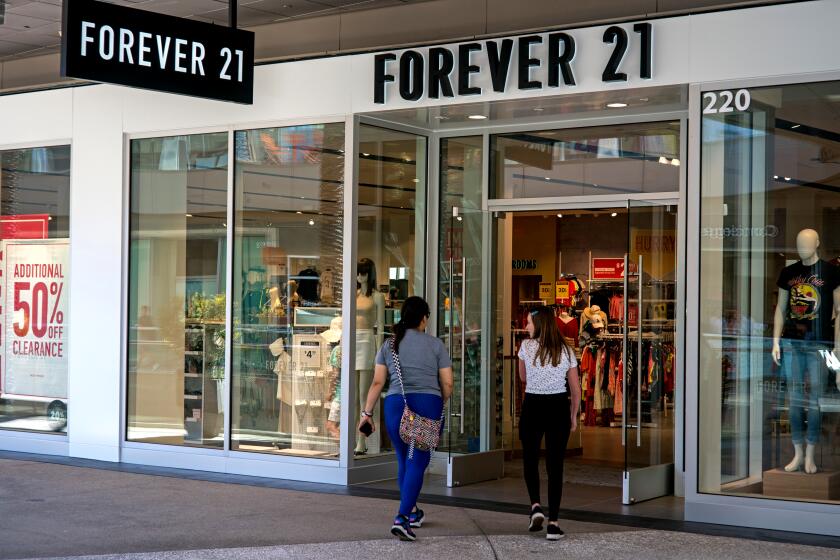Self-Employed Are Advised to Invest in Their Future
- Share via
Certified financial planner Louis Barajas of Los Angeles will never forget the 64-year-old dentist who couldn’t retire.
The dentist had no personal savings because he had always spent surplus income on equipment, training and other improvements. Selling the practice wasn’t a feasible option because other dentists weren’t interested in acquiring a sole proprietorship based on one man’s rapport with his patients. The plight of the dentist illustrates the financial-planning risks of the self-employed. Your business may be your biggest asset, but it won’t finance your golden years if you can’t sell it when you need to.
Barajas is among many experts who encourage entrepreneurs to invest outside the business as well as concentrate on building an enterprise that appeals to potential buyers.
Whether a client is rich or poor, self-employed or working for someone else, Barajas advises paying oneself first by saving at least 10% of income for retirement. He also recommends setting aside another 10% in a cash reserve, usually in a money market fund, for emergencies.
Investing some money outside of one’s own business versus plowing every penny back in is a common-sense strategy “in case the business doesn’t work,” said Steven Buchsbaum, a consultant and securities principal for Financial West Group in Tarzana. “You can’t afford to put all your money in one business.”
For entrepreneurs, saving toward retirement often forces a decision on whether to share the wealth with employees, Buchsbaum said. Although starting a tax-deferred, retirement-savings plan that includes the work force is more costly, he said, it’s a benefit that can help recruit and retain reliable employees, ultimately strengthening the business.
However, if a fledgling enterprise can’t afford such retirement benefits, Buchsbaum said, the owner should at least establish his or her own personal savings program, such as an individual retirement account.
Richard Moran, a certified financial planner for Financial Network Investment Corp. in Palos Verdes Estates, warns small-business owners to suppress their risk-taking entrepreneurial instincts once they start saving for retirement.
“Get rid of the emotionalism of investing,” Moran said. “Make your personal investments much more conservative.”
All too often, Buchsbaum said, risk-loving entrepreneurs are eager to buy highflying stocks they’ve heard about from friends. These days, that often means anything related to the Net. Like Moran, Buchsbaum recommends buying blue-chip stocks or mutual funds investing in large, well-known firms.
“You can build a very simple portfolio at a low cost by buying seven or eight Dow stocks,” Buchsbaum said. “That will correlate with the Standard & Poor’s 500 by about 80% to 90%.”
Small-business owners have a myriad of retirement savings choices, including internal profit-sharing plans. But, again, Moran and Buchsbaum prefer programs designed to invest outside the business. They include:
* The Simplified Employee Pension Individual Retirement Account, or SEP-IRA. These accounts allow owners of unincorporated businesses to save as much as 13% of taxable income, or $24,000 a year, whichever is less. SEP-IRAs feature relatively low administrative costs and flexibility on the timing of contributions. But they must include all employees with a tenure of three years or longer.
* The Savings Incentive Match Plan for Employees Individual Retirement Account, or SIMPLE-IRA. This IRA could be less costly since employers only have to include employees who elect to divert a portion of their own earnings into the plan. However, it caps the personal savings of the business owner to about $12,000 a year.
* Keogh plans. These plans allow relatively high contributions--as much as $30,000 annually under one structure and potentially more under another--but they are more costly to set up and administer than other savings vehicles. Still, the Keogh has become more attractive in recent years as the Internal Revenue Service has simplified some of the regulations and streamlined the record-keeping. In addition, there are some low-cost, standard plans available through some brokerages.
After a business grows and becomes incorporated, the owner may want to consider creating a traditional profit-sharing plan or 401(k) retirement savings plan, said Laura Tarbox, a certified financial planner in Newport Beach. If a small business cannot sustain the expense of a retirement plan that covers employees, Tarbox and other experts urge owners to set up their own personal IRAs. Tarbox favors Roth IRAs. Unlike traditional IRAs, Roths are not tax-deductible and they provide tax-free retirement income. They also are much more flexible than other plans, Tarbox said, because they do not penalize the withdrawal of contributions. That feature comes in handy when a small business suddenly lacks cash flow or faces another emergency.
Setting up a retirement plan serves as an important reminder that there’s life beyond the business, according to Barajas. He said some entrepreneurs get so wrapped up in work that they deprive themselves of time with their families.
Delegating responsibilities can free the small-business owner to spend more time at home. It also enables the entrepreneur to concentrate on his or her own unique strengths.
“Let someone else address the envelopes,” he said. “Teamwork enhances a business’ appeal to potential buyers.”
Buchsbaum said every small-business owner should have a competent accountant and lawyer who can guide an entrepreneur through the complexities of insurance, taxes, government regulation, business structure and financial planning.
“Have a good CPA or attorney when you start a business,” he said. “Don’t wait five years.”
More to Read
Inside the business of entertainment
The Wide Shot brings you news, analysis and insights on everything from streaming wars to production — and what it all means for the future.
You may occasionally receive promotional content from the Los Angeles Times.










